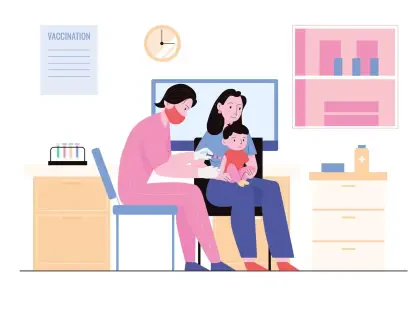Imagine a classroom where every student is fully engaged in their lesson, undistracted by the buzz of notifications or the lure of social media, a vision that fuels a heated debate in New Jersey. Educators, parents, and lawmakers are wrestling with the role of cellphones in schools as distractions and cyberbullying drive a growing push to restrict these devices during instructional time. This roundup article explores diverse perspectives from educators, legislators, parents, and students across the state, compiling opinions and insights on whether a ban is the right solution. The purpose is to present a balanced view of this complex issue, highlighting the arguments, challenges, and practical tips for navigating cellphone policies in educational settings.
Voices in Favor of Cellphone Restrictions
Educators Highlight Distractions as a Major Concern
A significant number of teachers and school administrators in New Jersey argue that cellphones are a primary source of disruption in classrooms. Many report that students often prioritize texting or scrolling over engaging with lessons, leading to reduced focus and lower academic performance. Reports from various districts indicate a consensus that limiting device access during class time could restore a more productive learning environment.
Beyond distractions, educators point to the role of cellphones in facilitating cyberbullying, which often spills over from online platforms into school settings. The emotional toll on students targeted by such behavior is a recurring theme in discussions, with many teachers advocating for strict policies to curb these negative interactions. Their stance is clear: reducing cellphone use is not just about attention but also about safeguarding student well-being.
This perspective aligns with broader concerns about the mental health of young learners. School leaders emphasize that creating boundaries around technology use can help students develop healthier habits, fostering face-to-face communication over digital exchanges. The push for bans, in their view, is a step toward prioritizing education over entertainment.
Lawmakers Push for Statewide Policies
Legislators across party lines in New Jersey have shown strong support for implementing cellphone restrictions in schools. Many elected officials argue that a unified policy would provide clarity and consistency for districts, ensuring that no student navigates a patchwork of rules. Bipartisan efforts to draft bills reflect a shared belief that distractions and online harassment must be addressed through decisive action.
Some policymakers have proposed model frameworks that include options like full-day device storage or powered-off rules during class hours. They stress the importance of balancing restrictions with practical needs, such as allowing access during non-instructional periods for older students. This flexibility aims to address varying maturity levels across grade groups, with stricter rules suggested for younger children.
Delays in passing legislation, often tied to political timing around election cycles, have frustrated advocates who see urgency in the matter. Despite setbacks, the momentum remains strong, with many lawmakers committed to revisiting these proposals in the coming months. Their collective voice underscores a determination to align New Jersey with other states already enforcing similar bans.
Perspectives Against Cellphone Bans
Parental Worries Over Emergency Access
A notable segment of parents in New Jersey expresses apprehension about cellphone bans, primarily due to concerns over emergency communication. The fear of being unable to reach a child during a crisis, such as a school lockdown or natural disaster, weighs heavily on many families. This anxiety stems from a desire to maintain direct contact in unpredictable situations.
While acknowledging the distractions cellphones can cause, these parents argue that modern school communication systems, like text or email alerts, may not always suffice in real-time emergencies. Some suggest that exceptions should be built into any policy, allowing students to keep devices accessible under specific circumstances. Their input highlights a tension between safety and the educational goals of a ban.
This opposition also raises questions about trust in school systems to handle crises effectively. Parents advocating against total bans often call for transparent dialogue with administrators to ensure that alternative safety measures are robust. Their perspective adds a critical layer to the debate, urging a compromise that addresses both learning and security needs.
Students Advocate for Personal Freedom
Many students, particularly in middle and high school, voice resistance to cellphone restrictions, framing the issue as one of personal autonomy. They argue that these devices are integral to their daily lives, serving as tools for organization, research, and social connection. For some, a ban feels like an overreach that undermines their ability to manage responsibilities independently.
Additionally, students point out that not all cellphone use in school is frivolous; many rely on apps for educational purposes or to coordinate extracurricular activities. They propose that teaching responsible usage, rather than enforcing outright bans, could better prepare them for a tech-driven world. This viewpoint challenges the notion that restrictions are the only path to improved focus.
The student perspective also touches on equity, with some noting that not all families have access to alternative communication methods outside of school hours. Their input suggests that a one-size-fits-all policy might overlook individual circumstances, calling for nuanced approaches that respect diverse needs while addressing classroom challenges.
Practical Tips for Implementing Cellphone Policies
Adopting Flexible Storage Solutions
For schools considering restrictions, adopting practical storage methods is a key starting point. Options like magnetically locked pouches, in-classroom bins, or designated lockers have been suggested as ways to keep devices out of reach during instructional time. These solutions aim to minimize distractions without creating an undue burden on students or staff.
Districts are encouraged to pilot different approaches, assessing which method best fits their infrastructure and student population. For instance, younger students might benefit from full-day storage, while high schoolers could handle limited access during breaks. Feedback from trial periods can help refine policies to ensure they are both enforceable and fair.
Engaging with technology providers to explore cost-effective tools is another recommended step. Schools can also look to neighboring districts for case studies on what has worked, adapting proven strategies to local contexts. This pragmatic focus on logistics can ease the transition to a restricted environment.
Involving Stakeholders in Policy Development
A recurring piece of advice from educational consultants is to involve all stakeholders—parents, students, and teachers—in crafting cellphone policies. Open forums and surveys can capture diverse opinions, ensuring that the resulting rules reflect a broad consensus rather than a top-down mandate. This collaborative approach often leads to greater buy-in and smoother implementation.
Transparency about the reasons for restrictions, such as curbing distractions and cyberbullying, is crucial in these discussions. Providing data or examples of improved outcomes from other regions can help address skepticism and build trust. The goal is to create a shared understanding of why such measures are necessary.
Additionally, schools should establish clear channels for addressing concerns post-implementation. Setting up a committee to review and adjust policies based on real-world feedback ensures adaptability. This inclusive strategy helps balance the varied needs within a school community, fostering a sense of collective responsibility.
Wrapping Up the Cellphone Debate in New Jersey Schools
Looking back, the discourse around cellphone bans in New Jersey schools revealed a complex interplay of priorities, from enhancing academic focus to ensuring safety and autonomy. The roundup of opinions showed a strong push from educators and lawmakers for restrictions, countered by valid concerns from parents and students about emergency access and personal freedom. Diverse insights painted a picture of a state wrestling with how to integrate technology into education without letting it dominate.
Moving forward, districts were encouraged to experiment with model policies, such as hybrid storage options, while maintaining open dialogue with all involved parties. Lawmakers faced pressure to resolve legislative delays, ensuring that statewide guidance emerged sooner rather than later. Schools also needed to invest in robust communication alternatives to alleviate parental fears, paving the way for balanced solutions. This ongoing conversation promised to shape educational environments in New Jersey for years to come, with a focus on adaptability as technology continued to evolve.









